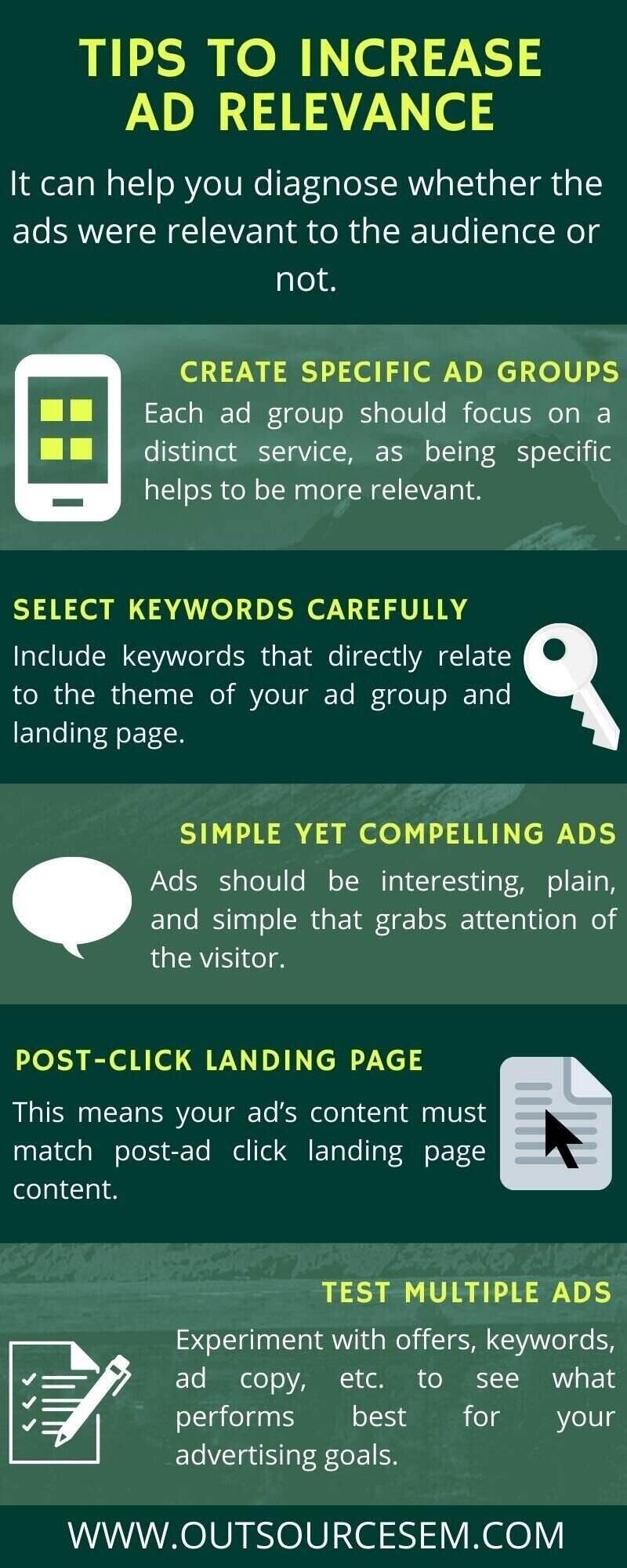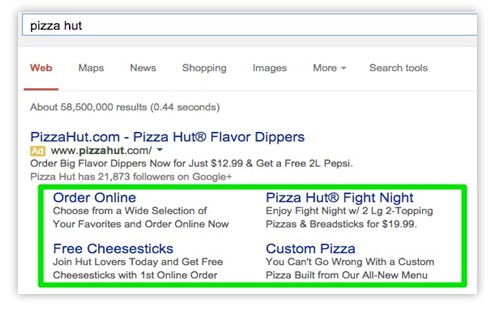In today’s technological world, digital business is all about nurturing a long-term relationship with your customers. The fact that nearly 1 million businesses are using Google ads should be enough to let you in on the impact that PPC ads have on consumer behavior. Companies are seriously spending money on Google ads which shows that they are generating good revenue and increasing their ROI by a very high percentage.
The Google ads are so powerful and profitable that there is no other form of Search Engine Marketing out there that could even come close to it, let alone beat it. The ads by Google mainly have two dimensions that have a strong effect on the overall business of any PPC campaign, first being the Google ads relevance and second ads campaign usefulness. The Google ads relevance should be aligned in a way so that whenever a click is made on the PPC ads, the specific needs and interests of the customers are fulfilled.
Suppose that a customer is looking for a blue shirt and clicks on any one of the ads displaying the results for the search query. On clicking the PPC Ad, and reaching the landing page of the website, the customer finds many designs and styles of shirt, but nothing in blue color, and even if blue shirt is present, it is pretty hard for the user to find it.
In such a scenario, it is most likely that the customer would end up leaving the website, and as the ad relevance is not proper, the money of the PPC campaign goes wasted. None of the companies would want to lose their money in such a way, and should strategize the ads campaign to be in line with their product description on the landing page of the website.
If a search query is made using certain keywords, and these keywords are not optimized properly in your Google ad campaign, there are chances that the visitor would not make a click on your ad. If your ad does not fulfill the needs of the customer, search engines like Google will give your ad a lower rank and that will cost you more money to run an effective campaign. For any PPC campaign, a creative campaign is important, but you must keep ad relevance in check that speaks directly to the target audience. In this article, we’ll talk about how to improve ad relevance that gives better ROI for businesses.
What does ad relevance mean?
Ad relevance means how closely an ad campaign matches the search query of a user’s search, and is determined by the parameters like how keywords are related to ads, post-click landing page, and thus decide the quality score of any PPC campaign. Businesses should have a proper strategy to get higher rank in the search results before diving into the world of PPC advertising. The Google ads account would require some of the basics like signing into an account, doing campaign creation, ad group creation, and finally, creating the ads as per the products offered by your company. The Google ads relevance is important as Google is the most popular search engine and it makes sense that PPC campaigns stand a chance to advertise in front of the largest potential audience to get a lot of impressions, clicks, and many other goals for their Google ads. With a high return on investment, ad relevance plays a big role in attracting visitors to the website that focuses on relevant ad groups, relevant landing pages, and help the PPC campaigns save their time and money.
In Google ads account, the ad relevance mainly connects to how explicitly your keywords relate to your ads. The keywords used in your ad campaign help in deciding whether to display the ads on a certain search query or not, as the PPC campaigns have to pay money for every click made on their ads.
The PPC ads focus primarily on the keywords in the search query made by the user. Businesses should do proper keyword research and then implement it in their ads campaign to optimize the best when the ads by Google are displayed. Outsourcing PPC keyword research services would help include the relevant keywords that lure the target audience into clicking on the ad. When strategizing PPC campaigns, businesses should keep in mind the following points:
• Choose type of ad to invest – In Google, there are different types of ad options like display ads, search ads, app ads, video ads, etc. The PPC ads should be chosen by the campaign according to the products or services that they provide and the goals they wish to achieve when the ad is displayed.
• Determine your ad budget and bidding strategy – Your PPC ad budget will dictate how much you are willing to pay for every click that is made on your ad. PPC ads focus on target audience with specific interests, intents, demographics, etc., so PPC campaigns should make the best use of negative keywords to exclude the audience who may not be interested and increase their Google ads click through rate by targeting relevant audience. In Google ads, the bidding strategies include the Cost per click bidding, Cost per thousand viewable impressions bidding, Cost per acquisition bidding, Cost per view bidding. Understanding these basics of Google ads Bidding is very important for PPC campaigns so that they can figure out the best bidding strategy that suits them.
• Customize your target audience, interests, location, and search – Any PPC campaign can choose their specific audience who they want their ads to be visible as they have high chances of purchasing the product or services. You can create “custom affinities” and “custom intents” to help you further tailor your search only to the relevant viewers. Once you’ve established your target audience, then with the help of specific search terms your PPC ad can rank higher in the SERPs. Be very smart on how many keywords you want to use, as excessive use of keywords may wind you up in front of the wrong audience.
• Organize your campaign into “Ad Groups” – While creating ad groups, you must ensure that you are offering integration and consistency. Divide similar keywords in a dedicated ad group so that visitors get to the specified product or service that they are looking for easily.
For eg. You can divide your campaign into search brand and non-brand. Your brand campaign(s) will perform quite differently from your non-brand campaigns because these users are already familiar with your company, products, or services at some level. But for non-brand, you’ll have to manage budget, reports, etc. as the visitors are not familiar with your products/services. The Google ads campaign settings should thus be worked in a very proper frame and if you find it difficult you can always take the help of white label PPC service providers.
• Design landing page that matches the intent of each search term – Whether you choose from an existing webpage, or you design a new one, make sure you are sending visitors to a page that helps them find what they are looking for. The businesses should focus that the content on the landing page should match the content on the website as search engines like Google take it very seriously.
For instance, you are a digital marketing agency and the ad shows you provide PPC services. So when a visitor reaches your website you need to have various services under PPC domain like PPC audit, video ads, display ads, etc. Therefore try to optimize the content on the landing page, have a good landing product page description, so that the user is facilitated at every step to move further and gets converted from visitor to a customer.
Why is ad relevance mportant?
In short, higher ad relevance means higher quality score. The high-quality score in the Google ads campaign, not only reduces the cost per click but also helps the ad to rank in the SERPs. This is what any PPC Campaign strives for with their strategy and try to reach out to the target audience. This not only saves money of the campaign from getting wasted but helps them in deciding the budget for the campaign as to what extra benefits can they provide to the customers. On both Google and Bing, quality score is measured by ad relevance.
A high-quality score means that your ad relevance, type of keywords used, and post-click- landing page is relevant and meet the needs of the customer. Having a high-quality score means that you have a lower CPC. In the Google ads account, auction is partly based on relevance to encourage advertisers to create ads relevant to ad campaigns, as this builds the trust of the customer on the website. They get assured of the fact that they are getting what is being displayed on the ads. This helps in lead generation and make a huge amount of money for the businesses. Once the customer is satisfied with the ad relevance and the products or services of the company, they become a partial promoter of the company. They start sharing the product description with their friends and family and help in the peer to peer marketing for businesses. The customers are the ones for which all the efforts are taken by the companies to maintain their Google ad relevance, and if they are only not happy then what is the benefit for any campaign to work so hard. Businesses should toil hard on their strategies to prepare the best ads for their campaign and try to increase relevant traffic on their ads whether it is organic traffic or the paid traffic.
Tips increase ad relevance
The Google Ads relevance is important for any business to provide what the customers are searching for and plays an important role in the online marketing strategy. This advertising powerhouse has the ability to drive traffic, increase brand awareness, lead generation, increase sales, etc. when carried out correctly. The more interest the visitor takes in your ads, the more chances of them making a click on the ad and reaching your website. Let’s see some tips to increase ad relevance on Google ads:
1. Create specific ad groups – Each ad group should focus on a distinct product or service, as being specific is one way to be more relevant. For instance say, you run a digital marketing agency and deal in various advertising services like content marketing, email marketing, etc. try creating a specific ad group for each of them. This is important because if a customer is searching for a specific service, they can easily refer to the concerned category. Businesses should focus on creating ad groups that cost less and convert more. Basically, while creating an Ad Group, you want to ensure that you're offering integration and consistency:
• Integration – Create a system where you're consistently creating keyword groups, ad text, and landing pages that are integrated with one another. Each step should be linked with the previous one so that if the customer feels to make any changes, they can do it easily by moving on to the previous one.
• Consistency – This integration should lead to messaging consistency. Your ad text and landing pages should speak directly to the searches users are typing in to reach your site. The consistency in the ad groups makes it quite easier for the customer to navigate through and reach the desired page.
2. Select keywords carefully – Keywords are the main words around which the relevance of ad display revolves. Include keywords that directly relate to the precise theme of your ad group and post-click landing page. It’s often more practical to bid on long-tail keywords, rather than single words because leads visiting your page from long-tail searches tend to be more qualified. You may receive fewer impressions and traffic from longer phrases, but the quality will be higher because your offer is more relevant to what they’re looking for. Only the relevant traffic would then make a click on the ad, thus the chances of an increase in conversion rate become high. When people see their search terms in the ad text, it shows them the ad is relevant to their search. Therefore, its best practice to include top keywords in your ad text, especially in the headline and the meta description. You can also consider adding keywords in the “Display URL” in the ad text and thus increase relevance.
3. Simple, yet compelling ads – Highlight the unique characteristics of your product that make it stand out from the competition. Add a strong CTA that encourages users to click, and tells them exactly what they’ll be doing post-click. Design is important but overdoing the content with themes may not be so appealing, as the focus of the visitor may shift from the main content to the design. The ads should be interesting and simple that grabs the attention of the visitor. The ad should focus on the customer and increase urgency, that if they do not make a click now, they may miss out on some amazing offers.
4. Post- click landing page – Ad relevance is partly dependent upon landing page relevance. This means your ad’s content must match your post-ad click landing page content. Your ad captures attention and the headline on your landing page holds that attention. To keep the visitor interested to move further down the conversion funnel, design your landing page that provides services as displayed in the ad. In addition to implementing a match between your ad and landing page, be sure to include specific pages for each ad group. Also ensure your page delivers what the ad promised, include top keywords, the product or service is the same as mentioned in the ad, provide detailed information about the ad content, etc.
5. Test multiple ads – Experiment with offers, keywords, ad copy, etc. to see what performs best for your advertising goals. Google helps with this by automatically rotating ads within an ad group to continuously show the best performing ads. Reviewing your ad performance and A/B testing your campaigns regularly can help you figure out the best ways to keep your ads relevant and achieve your marketing goals. With A/B testing statistical data, you become aware of what changes need to be done and figure out the best that works for your businesses. For how long you should do A/B testing, depends on what results businesses are looking for in their ad campaign. If businesses are not getting the relevant clicks as per their target goals and various other parameters, then performing multiple tests may help them to choose the best strategy for achieving their goals.

Factors deciding Google Ads Rank
Google uses an ad auction to determine where advertisements will show on a Google search results page. Some contributing factors that directly influence Google ad rank are discussed below. These factors play a crucial role in determining the rank of the ads and need to be given attention.
A. Bid strategy – The large businesses have higher advertising budgets compared to the smaller ones, but the small businesses do not need to fear as ad auction is not about the most amount of money that one needs to pay to get a top rank. If that were the case, the top ads would always be from the biggest spenders despite the quality of the ads or whether or not they match what the user is looking for. If in Google ads campaign you are not sure about how much you are willing to pay as a starting bid, you can always choose a bid that you’re comfortable with.
Remember that you can always change this number once you have a better idea of how much you want to spend. You can also consider using auction insights report and compare your performance with other advertisers and then plan your bid amount accordingly. Google Ads also provides some helpful tips on choosing a bid amount that works for you in the starting and at the later stage.

B. Enabled ad formats & ad extensions – To make your ads more enticing to click, Google Ads provides several types of ad formats as well as numerous ad extensions. According to Google, ad extensions can help in increasing the click-through-rate, each time a click is made by the user on the ads displayed. Since the goal of any campaign is to increase sales, the ad extensions provide additional information about your ads giving visitors more reason to choose your services. For example, a site link extension lists links to specific pages on your website below your ad text. This allows people to navigate directly to what they’re most interested in (e.g., general products page, shipping information, or contact information). The callout extension is shown below your ad’s text and provides additional information that may not be included in the actual ad text. “Free shipping” or “discount coupons” are a few examples of callouts. These provide unique aspects of your business and needs to be updated from time to time to keep the customer engaged.

C. Expected click-through rate – Now that you have a bid amount and have set up ad extensions, you want to look at a few more factors to improve your Google Ads rank. Click-through rate helps in determining the ad’s quality, its rank, and how well Google thinks your ad will perform for a keyword. Specifically, how likely users are to click on your ad, reach your website, and finally convert from a visitor to a customer. It makes a prediction based on the past performance of that keyword within your account as well as across other advertisers’ accounts. This information can be helpful in deciding whether or not a specific keyword is relevant enough to your ad to perform well.
D. Landing page experience – This landing page won’t show up on your actual ad, but plays a vital role in determining your ad’s rank. You may have an eye-catching advertisement, perfect keywords, as many extensions as possible, and a good bid, but all of these qualities of PPC ads are only important when you have a good landing page. The visitors are only informed about the products or services in the ads, but the real experience is felt only after reaching the landing page. Businesses in their ad campaigns must consider three things about landing page:
• The page should have relevant and unique content that matches the ad’s content.
• It should be easy to browse and should be compatible both on the desktop as well as the mobile version.
• It should display a clear layout of your business’ purpose, and the different types of services that you offer. You can inform the customer whether you provide services only in the country, or also deal globally.
Round off
With the discussion above, it must be clear why the ad should be in relevance to the post-click landing page. The ad takes the visitors to the website but it is the relevance of the product description page that makes the user feel easy, that they are at the right place and have not been misguided by the ad displayed. Not only that, but improving ad relevance is worth the effort since it results in overall campaign improvement providing them with a higher Quality Score, better ad positions, and lower cost-per-click. You can contact a digital marketing company for all your paid campaign solutions, as the PPC consultants have expertise in optimizing lead generation, running local service ads, running remarketing campaigns, preparing PPC reports, etc. help you achieve desired advertising goals.
References
• How to Increase Ad Relevance in Google Ads
• 6 Top Tips to Improve Your Ad Words Ad Relevance
